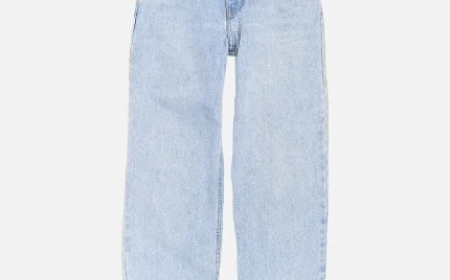Everything You Need to Know About Paint Drop Cloths
Learn everything about paint drop cloths—types, sizes, materials, safety tips, and how to choose the best one for your painting project. Keep your space clean and protected.

Whether you're painting a single room or tackling a large-scale renovation, protecting your floors, furniture, and fixtures is a critical part of the preparation process. Paint drop cloths serve as a barrier between paint splatters and valuable surfaces, preventing accidental spills from becoming permanent stains. These cloths are a must-have for professionals and DIYers alike who want to keep their worksite clean, safe, and efficient.
From understanding the types of drop cloths available to choosing the right size and material for your project, this guide covers all the essential information you need before you start your next painting job.
What Are Paint Drop Cloths and Why Are They Essential?
Paint drop cloths are heavy-duty coverings used to shield floors, furniture, and other surfaces from paint drips, dust, and debris. Theyre an essential tool in any painting or renovation project to maintain cleanliness and avoid costly damage.
Key Functions:
-
Protects floors from paint spills and splatters
-
Covers furniture and valuable items during painting or sanding
-
Serves as a barrier against dust and residue from prep work
-
Minimizes cleanup time after the project is complete
Using a drop cloth not only protects your space but also provides peace of mind while you focus on precision and creativity during your painting tasks.
Types of Paint Drop Cloths Based on Material
The material of your drop cloth determines its durability, absorbency, and reusability. Different jobs require different cloths, and knowing the pros and cons of each type helps you make an informed decision.
1. Canvas Drop Cloths
-
Heavy-duty and reusable
-
Absorbs paint well without bleeding through
-
Ideal for professional or frequent painters
-
Can be machine-washed and stored easily
2. Plastic Drop Cloths
-
Lightweight and disposable
-
Waterproof but not absorbent
-
Best for one-time or light-duty use
-
Slippery, so not ideal for floor coverage
3. Paper Drop Cloths
-
Affordable and disposable
-
Absorbent but not durable
-
Suitable for small, indoor projects
4. Canvas-Plastic Combo
-
Offers the absorbency of canvas with the waterproof barrier of plastic
-
Excellent for areas with high risk of spills
Selecting the right material can make your painting experience more effective and less stressful.
Choosing the Right Size and Thickness for Your Needs
Drop cloths come in various sizes and thicknesses, making it easy to find one that suits your specific project. Getting the right size ensures complete coverage, while appropriate thickness prevents seepage.
Sizing Guidelines:
-
4x5 ft or 5x5 ft: Great for covering small furniture or protecting a table
-
6x9 ft: Standard size for small rooms or spot painting
-
9x12 ft or larger: Best for full-room coverage or flooring protection
Thickness Options:
-
8 oz: Lightweight, best for basic coverage
-
1012 oz: Medium to heavy-duty, suitable for most projects
-
14 oz and above: Heavy-duty, ideal for contractors and pros
The right combination of size and thickness gives you complete control over mess management.
How to Properly Lay and Secure Paint Drop Cloths
To maximize effectiveness, drop cloths should be placed and secured with care. An improperly laid cloth can lead to accidents or expose surfaces to paint damage.
Tips for Setup:
-
Lay the cloth flat and smooth out any wrinkles to avoid tripping
-
Use painters tape to secure edges and keep the cloth in place
-
Overlap cloths if covering large or oddly shaped areas
-
Fold excess fabric against walls or baseboards for added protection
-
Make sure no part of the target area is exposed
Correct placement and securing make your workspace safer and more efficient.
Reusability and Care Tips for Canvas Drop Cloths
Canvas drop cloths are valued for their long-term use. With proper care, a single cloth can last through dozens of painting jobs without compromising its effectiveness.
Maintenance Tips:
-
Shake off dried paint chips after each use
-
Wash on a gentle cycle if the cloth is heavily soiled
-
Air-dry to preserve the fabric and stitching
-
Store folded in a dry, cool place to prevent mildew
-
Inspect before each use for holes or worn areas
Maintaining your canvas drop cloth properly extends its life and saves money over time.
Safety Considerations When Using Drop Cloths
While drop cloths protect your surfaces, they can also pose safety risks if not handled correctlyespecially in high-traffic work areas.
Stay Safe by:
-
Using non-slip-backed cloths for floor protection
-
Avoiding thin plastic sheets in areas where people will walk
-
Keeping edges taped down to prevent tripping
-
Keeping walkways clear and organized
-
Immediately removing wet cloths to avoid slipping hazards
Safety should always be a top priority in any project, no matter how small.
Common Uses Beyond Painting Projects
Though designed for painting, drop cloths are incredibly versatile and useful for many household and professional tasks.
Alternative Uses:
-
Protect floors during home renovations or moving furniture
-
Create dust barriers during drywall installation or sanding
-
Cover outdoor furniture during winter months
-
Use as a backdrop for photography or video shoots
-
Serve as picnic blankets or ground covers for camping
The durability and adaptability of drop cloths make them a worthwhile investment for many different applications.
Eco-Friendly Advantages of Reusable Drop Cloths
In a world increasingly focused on sustainability, choosing reusable drop cloths is a smart move for eco-conscious consumers and contractors.
Environmental Benefits:
-
Reduces reliance on single-use plastic sheets
-
Decreases landfill waste
-
Promotes responsible consumption in home improvement
-
Supports long-term cost savings by reducing re-purchase frequency
Canvas drop cloths, in particular, align well with green practices and can be reused in multiple capacities.
Differences Between Drop Cloths and Painters Tarps
While often used interchangeably, drop cloths and tarps serve slightly different functions. Knowing the difference helps in selecting the right tool for the task.
Comparison Overview:
| Feature | Drop Cloth | Painters Tarp |
|---|---|---|
| Absorbency | High (canvas) | Moderate (varies by material) |
| Durability | High (reusable) | Varies by type |
| Slip Resistance | Canvas offers good grip | Plastic tarps may be slippery |
| Best Use | Interior paint jobs, sanding | Outdoor or heavy-duty use |
Using the correct product ensures better protection, safety, and professional results.






































